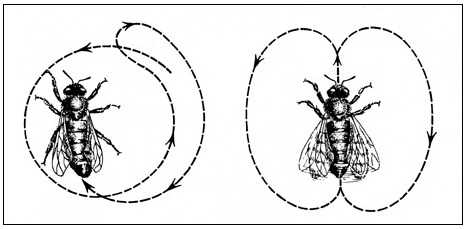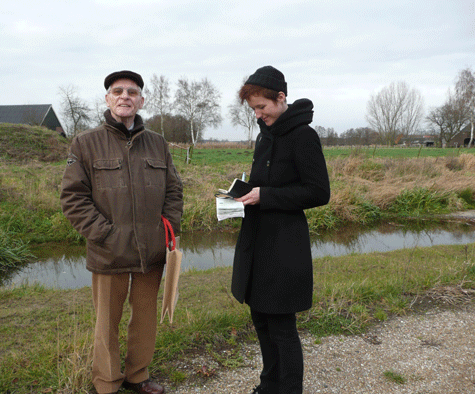If Bees Are Few… a (non-urban) garden in the making by Doris Denekamp (DAI, 2011) & Jimini Hignett (DAI, 2010) / upon invitation by Kunstvereniging Diepenheim & Professorship Theory in the Arts ArtEZ / presentation March 6
Doris Denekamp and Jimini Hignett have been invited by curators Joop Hoogeveen (Kunstvereniging Diepenheim) and Peter Sonderen (Professorship Theory in the Arts, at ArtEZ) to design a garden under the heading 'The Non-Urban Garden'. During the design trajectory Gabriëlle Schleijpen, Head of the DAI Programme, will act as a sparring partner for Jimini Hignett and Doris Denekamp.
Kunstvereniging Diepenheim aims to develop into a national centre for the investigation of the relationship between nature and art, with particular attention to gardens designed by artists. The project is part of the
concept 'Gardens of the 21st Century' and presentations of six design sketches by different artists will take place in Diepenheim at the end of February, four of which will be realised during 2013.
The other invited artists are: Bikvanderpol, Birthe Leemeijer, Edward Clydesdale Thomson, Jeroen Kooijmans and Jorrit Noordhuizen.
The title for Denekamp & Hignett's project has been taken from a line in the poem To make a prairie by the American poet Emily Dickinson. If Bees Are Few... used thus, as an unfinished sentence, the line raises questions about the far-reaching consequences of a seemingly frivolous statement. What happens if bees are few? This question, which in recent years seems to have become more and more urgent, has inspired Denekamp and Hignett's thinking about the design of a garden for the 21st century.
"On the 6th of March we will present our research and plan for the Non-Urban Garden at the 'Kunstvereniging Diepenheim. In recent weeks we have visited Diepenheim and the surrounding area several times to get to know the Twente landscape. It seems a bit odd to be designing a garden for such a rural environment – unlike Amsterdam and Rotterdam (where we live), there is plenty of green and almost everybody has a garden already.
One important characteristic of this region is the large estates, manor houses, which have their origins in the middle ages. The extensive grounds surrounding the estates add something to the biodiversity of the area, which is otherwise almost exclusively agricultural. Economic reasons have formed the landscape here – first there were small farmers operating within the feudal system, later the textile industry flourished in the region, and the moors were transformed into bleaching fields. With the introduction of chemical fertilizers, the small farms developed into major agricultural industry.
Nowadays the landscape is characterized by large areas of maize, grown as cattle feed. This agriculturalisation of the landscape has formed the backdrop for our Non-Urban Garden. Worldwide, an alarming increase in the death of bee populations has been observed in recent years. In Europe, the Netherlands has the highest recorded percentage of bee deaths. The reason behind the deaths has, for a long time, been unclear, but now more and more independent researchers point to a relation with a relatively new insecticide: imidacloprid. This systemic insecticide, though not intentionally aimed at honey bees, is nonetheless absorbed by them. It affects the bee's nervous system and causes a severe weakening of bee populations, which makes them vulnerable to moulds, mites and viruses. Despite partial banning in several European countries, the Dutch government, kowtowing to an aggressive lobby by pesticide manufacturers, has not taken any steps to prohibit these dangerous insecticides. An investigation by documentary filmmakers for the Dutch television programme, Zembla, resulted in some discussion in government, but thus far without concrete results.
For our Non-Urban Garden we are therefore planning a garden specifically for bees. The garden will be filled with plants that can provide food for the bees or that have other properties beneficial to them. The layout of the garden will follow the molecular structure of the insecticide imidacloprid. The garden will also be home to six beehives – looked after by a local bee keeper. Inspired by an old Slovenian tradition, these beehives will be painted – with the portraits of people who 'have bees in their heads'.
People committed to the honey bee's well being – Emily Dickinson (poet and gardener), Rachel Carson (writer and eco-activist), Henk Tennekes (toxicologist specialised in bee deaths), Jan Rabe (local bee keeper), St Ambrose (patron saint of bees and bee keepers) and Bhramari Devi (Indian bee goddess). The geometric layout of the imidacloprid molecule is also a reference to the tradition of geometric gardens, in which the ideal of (divine) order precedes nature. Translated into contemporary terms, this strict pattern indicates the ideal of nature as the system that can be controlled by means of science and technology. By implementing this order in the bee garden, we want to question this ideal and instigate discussion."


